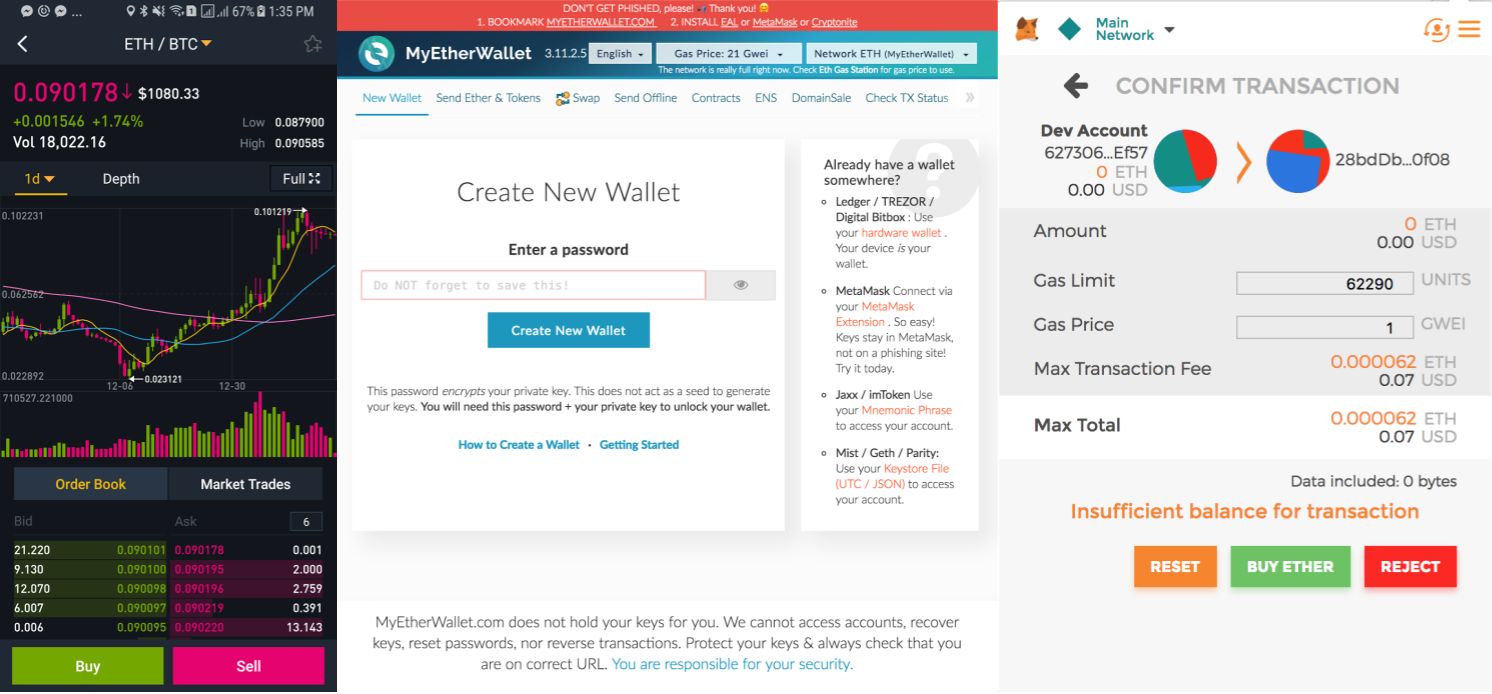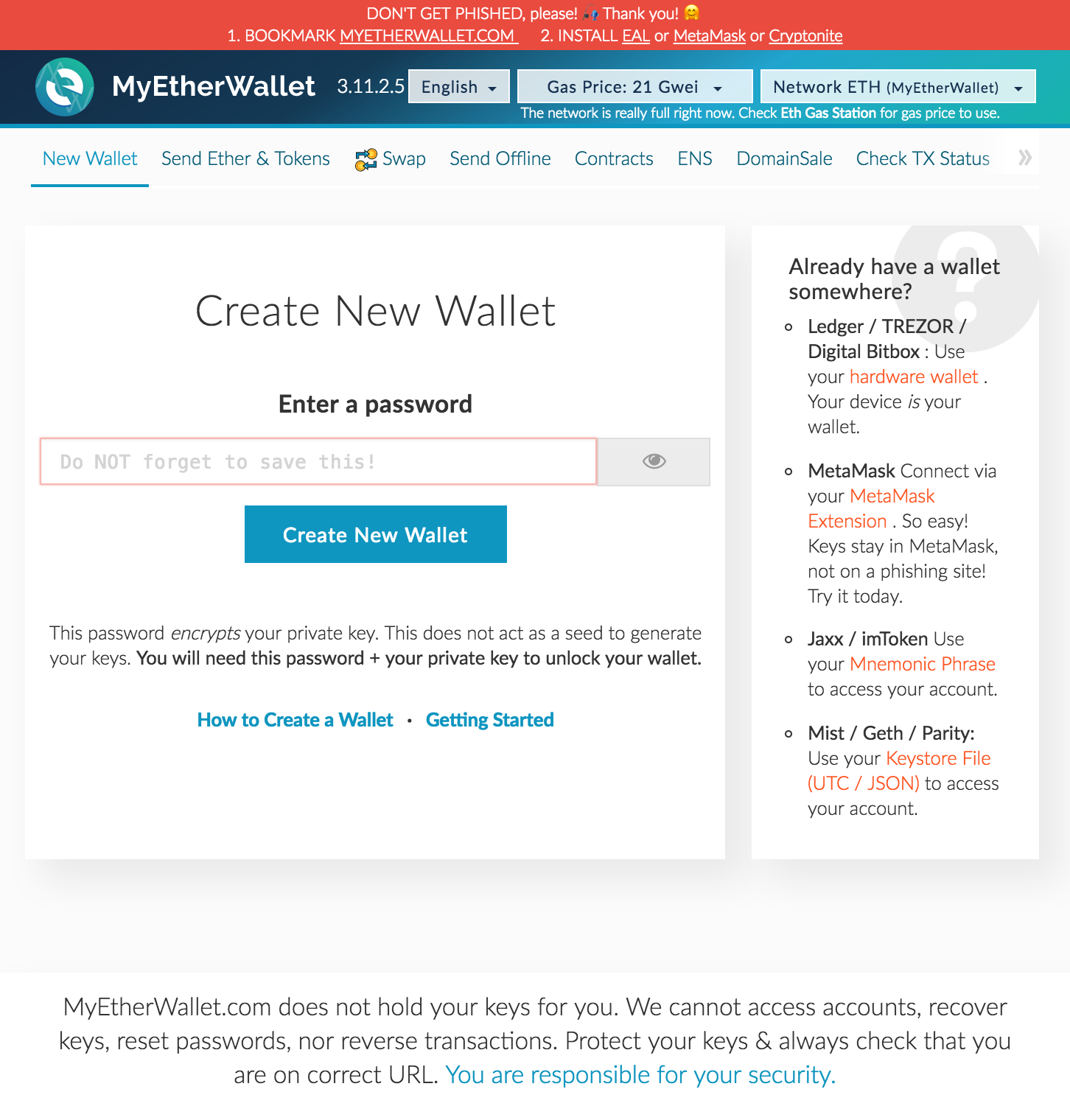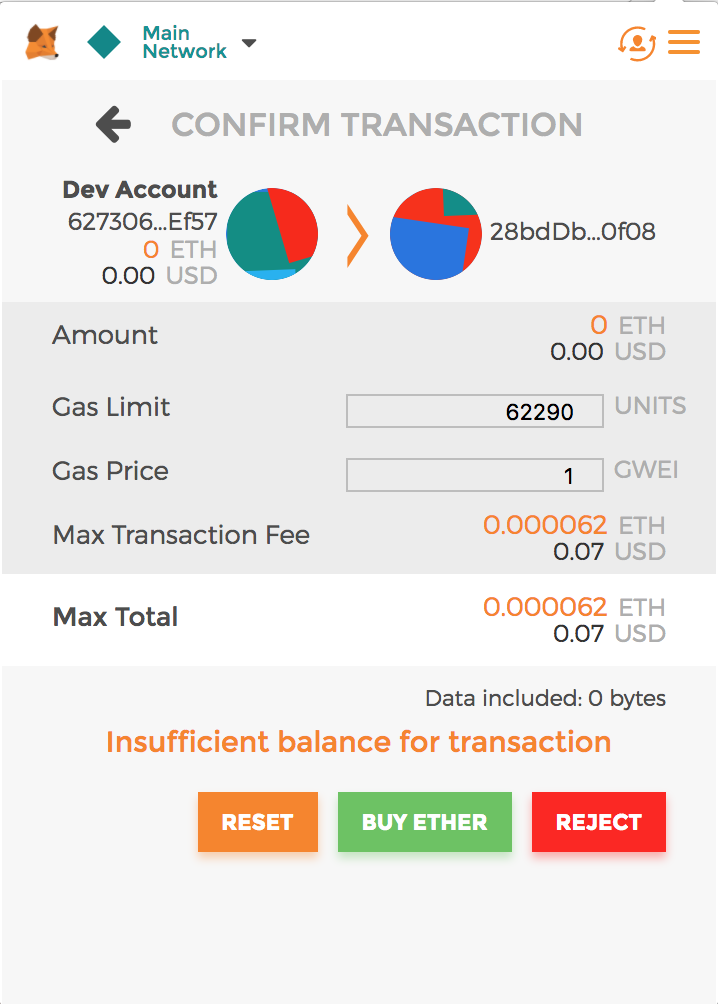Crypto’s UX Challenge: Or Why The Blockchain Needs Game Designers
Every day, more people get exposed to cryptocurrencies, and it’s on us as designers to make sure they can interact with the technology. As our audience grows from technical to more casual, how do we design a user experience that doesn’t alienate them?


The first time I tried downloading an Ethereum wallet, I unintentionally set up an Ethereum node on my Desktop PC, consuming all of my free hard disk space.
Eventually, after much head-scratching, I was able to create a wallet Keystore file, import it onto the Metamask browser extension successfully and start using it for Ethereum transactions.
All-in-all though that initial learning phase to set up a crypto wallet was, frankly, pretty terrible.
In game development we always refer to the term FTUE (pronounced [/’footuĭ/]), or First Time User Experience. The ideal FTUE should surprise and delight the user in the very first few seconds of opening up the app. Zynga took this to the extreme, mandating that games be designed such that players are already having fun in their first 3 clicks.
They knew what they were doing though. Analytics and research has shown that people are more likely to churn (or quit playing) a game if the loading screen takes up loading a few seconds more than what they’re used to, or if they have to do unnecessary clicks like signing up for an account before getting to the game itself. With this UX-centric approach, Zynga and other game developers have successfully transitioned games from core to casual — effectively increasing the demographic of gamers from 12 to 21 year old males to virtually everyone, from a 3 year old toddler playing a virtual cat poking game to a 65 year old grandma playing a match-3 game on the bus.
Cryptocurrency is now undergoing a similar transformation; what started out as a technology only used by technically savvy people is now breaking into the mainstream. Given this influx of new non-technical users, most blockchain apps would greatly benefit from the watchful eye of a FTUE-focused game designer.
As an example: just recently, older family members asked me about Bitcoin and Ethereum. I imagine them googling ‘ethereum wallet’, and the first link they see leads them to this web page:

The first thing they’ll see is a password field, missing a username field that they would expect to also be there. Their eyes then move up and see a scary red warning banner, telling them “DON’T GET PHISHED, PLEASE!” They then go through the page reading unfamiliar terms: gas, gwei, metamask, keystore… all the while thinking, “what does ‘don’t get phished’ even mean?” Finally, the last sentence of the page states unequivocally — ‘You are responsible for your security.’
I would have churned right there and then.
To be fair though, casual mobile games and crypto wallets have very, very different requirements. For a wallet, security is of the utmost concern — if it’s a tradeoff between user comfort and making sure the wallet is secure, user comfort will have to take a back seat.
With crypto’s current growth though, eventually more and more people will get exposed to cryptocurrencies and the blockchain, and it’s on us as developers and designers to make sure they can interact with the technology. Therein lies Crypto’s UX challenge:
As our audience grows from a highly technical demographic to a more casual one, how do we design a user experience that doesn’t alienate them?
In Altitude Games we’ve been integrating a cryptocurrency wallet in one of our flagship titles: Dream Defense. We wanted to craft a wallet experience with the goal of making it the smoothest interaction possible for users, something that wouldn’t feel out of place in the games that we make.
Creating an account in Dream Defense’s ALTO Wallet
Our goal was for the player to be able to create an account in the fewest number of clicks possible. Currently it’s at 2: 1) The user taps the wallet button, front and center on the Level Select screen, and then 2) presses ‘Create Account’ to get started.
We incentivize the player to signup by showing the signup bonus (a few units of our cryptocurrency ALTO) and by immediately showing them the benefits of owning an ALTO wallet — earning ALTO by completing quests.
Another interaction that we’ve built onto our wallet is the capability to send your cryptocurrency to your friends, as one of the benefits of having a token being used in your game is having it easily transferrable to your peers. We’ve prototyped the following UX:
Sending ALTO to another user’s wallet from within the game
We’ve added obvious cues to show what’s happening in this interaction: informational instructions at the top, and a huge arrow in the middle of the screen showing where the ALTO is being sent. We used a draggable slider so the user doesn’t have to deal with typing into an input field.
We’ve also added rewarding visual feedback similar to what you see while playing the game. Successfully scanning a QR code gives an animation of it popping into the screen from the camera, and sending it to another player pops up a summary of the transaction.
Both of these interactions are our ideal user experiences though — they’re running on our local test blockchain with pre-funded Ethereum accounts. If we were to go live with this game on the Ethereum blockchain, more than a few factors need to be taken into consideration, some of these are:
Ether transactions are complicated and cost ETH for most operations
The Metamask screenshot below is for a transaction to claim a ‘Free Item’ from Ethercraft. The item itself is free, as we can see from the Amount field, but there’s a corresponding transaction fee of 0.000062 ETH, determined by the Gas Limit, Gas Price and how congested the network is. We would need to communicate this to the player if we were processing similar transactions in our game. What’s more, we would also need to show a player their Ethereum balance in the game as well, making our UI more cluttered.
2. Users may want to import or transfer wallets
Some of the players who will be playing our game will already have an Ethereum wallet account. They may want to use that account directly, and would rather have an ‘Import Wallet’ feature rather than creating one inside the game.
Some players may also want to be able to manage their wallets outside of the app — this means having to be able to export a Keystore file out of the game, which is another separate UI screen in itself.
These are just 2 considerations, there are a lot more. These UX challenges are something that people working on the blockchain will be facing for the months to come, but is a problem area that can easily be addressed by the skillset of game designers.
And this is just the tip of the iceberg. User experience design is only one part of the equation; there are other challenges in crypto where game developers can greatly contribute.
Token economy design, for example, is a massive challenge when creating a cryptocurrency token. Just leaving one exploit in our token economic system could bring it crashing down. While some people in blockchain have only just started designing economies, there are game developers who’ve been working on designing economic systems for years — building large-scale and stable massively multiplayer online economic systems. Their insights and tools would be laterally applicable to creating sustainable token economies.
We see our games eventually being part of such a robust cryptocurrency economy. For now though, we’ve started with the simplest use case for using blockchain in our game, which is to support the use of in-game cryptocurrency as an alternative to in-app purchases.
ALTO Purchase in Action!
We envision in the future that other game developers will also start moving into the space, adding more ideas on how to use the blockchain and making the already vibrant space even more creative.
Some veteran game developers are already leading the way. Most recently, Brian Fargo of inXile and Anna Sweet (formerly of Valve and Oculus) have started building RobotCache, a decentralized games distribution platform. Crytek, developers of Crysis, also announced a few weeks back that they’re integrating blockchain technology into their games via CRYCASH.
Hopefully more and more of us take part, and apply the knowledge we’ve built from building games onto this new exciting frontier. Let’s create products that make blockchain technology more accessible, and more importantly, more fun for our players.
Robearto making good use of his purchase! Dream Defense is available for download over at Google Play or the App Store
For more on blockchain game development and our Unity blockchain wallet, check out my previous post:
https://medium.com/@polats/lets-build-a-decentralized-game-economy-using-blockchains-cf0a80e43da1
Thank you for reading! Please leave questions and comments, as well as any suggestions on what you want to know more about on the next article.
Read more about:
BlogsAbout the Author(s)
You May Also Like









